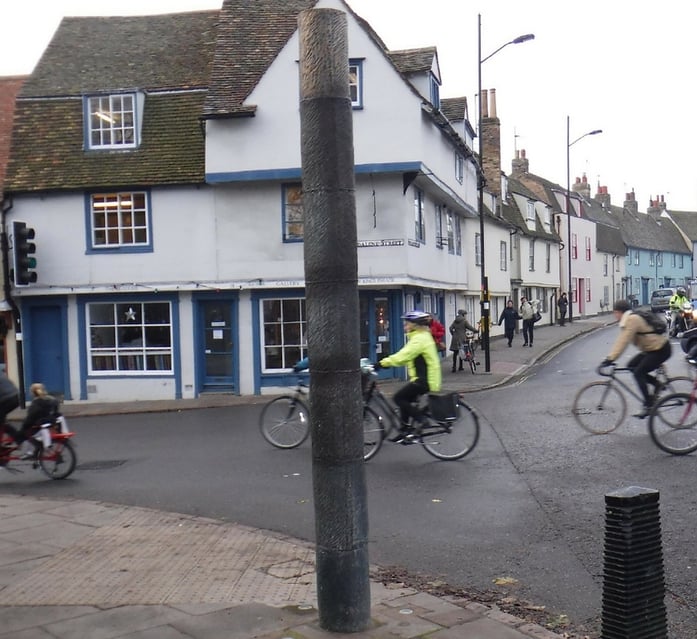In art
Artworks by Michael Spence
The artist Michael Spence explores the archaeosphere through a series of artworks. As he explains:
"I use bits of fabric, news print, cardboard, old photos and in some cases rusted metal, along with acrylic paint to create layered constructions. I’m interested in creating a sense of history, of things lost, of places buried, always hoping to leave the viewer with more questions than answers".
see his archaeosphere works on his website here


A monument to the archaeosphere:
'The Core' by Michael Fairfax (2001)
The Core is a 11.5 foot high bronze column near the corner of Magdalene Street and Chesterton Lane in Cambridge, opposite St Giles Church. The height of the column represents the depth of archaeological stratigraphy at that location (measured from the ground surface down to the upper surface of natural layers), as revealed by an archaeological excavation in 2000.
The excavation was unusual in that the trench dug - far from being the usual rectangular shape - had a cylindrical form, circular at the top and base. This was because a sewer shaft of that shape was being constructed. It is important to bear in mind, when looking at the drawing of the section, that this too was circular, with the beginning joining up with the end. All this makes the sculpture in the form of an upstanding cylindrical column passed by thousands of motorists, cyclists and pedestrians every day, all the more appropriate as a monument to the archaeosphere.
Note that the sewer shaft is now fully integrated into the archaeosphere. Its cuts and fills can be considered as stratigraphic entities in their own right, just as much as the more ancient deposits.
You can read more about this sculpture - find out about the deep stratigraphy and many finds uncovered by the excavation (including Anglo-Saxon burials and a hoard of coins), and see a drawing of the circular section - at the back of this conference report, available to download on ResearchGate
'The Core' - a sculpture by Michael Fairfax in Cambridge, England